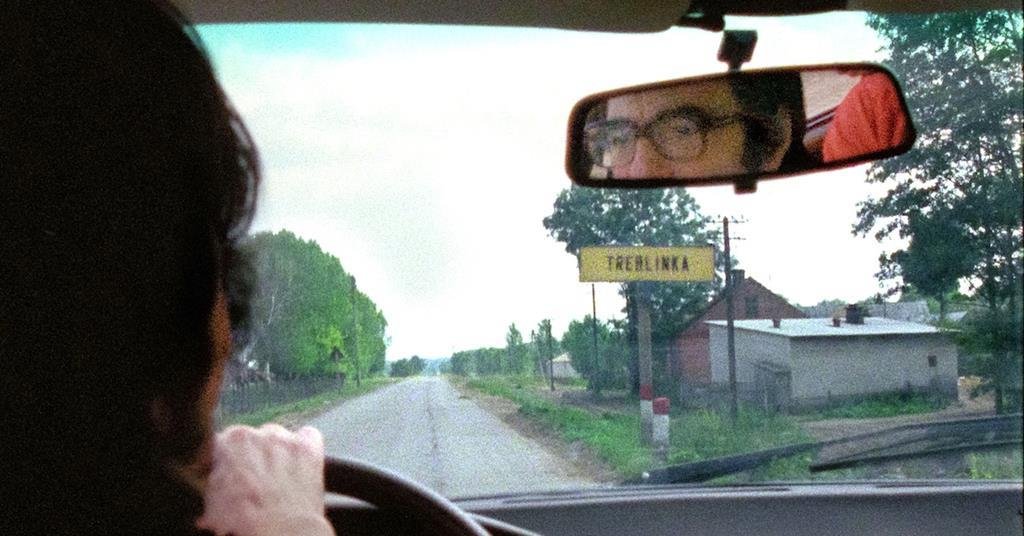Dir. Guillame Ribot. France. 2025. 94mins
Shoah (1985) is an uncompromising ‘stare into the black solar of the Shoah’ which took 12 years for director Claude Lanzmann to finance, shoot and edit throughout the ruins of japanese Europe. At over 9 hours in size, it’s a terrifyingly tough movie – and was at all times meant to be. At no level did Lanzmann need his viewers to sit down simply with the Holocaust (the phrase Shoah is its Hebrew equal). All I Had Was Nothingness is, in a method, the CliffsNotes to Shoah: it’s a documentary on how Lanzmann made the movie, utilizing Lanzmann’s unused footage, wherein he strikes to a extra central function. It additionally explains and contextualises Shoah utilizing his personal writings, which is a luxurious Lanzmann by no means gave the viewers of his unique work.
A movie that frames Shoah, however can also be a continuation of it
Lanzmann, whose off-screen legacy grew to become troubling, died in 2018; this movie is produced by his widow. It goes with out saying that Shoah is eternally necessary — it’s a part of UNESCO’s Reminiscence of the World register. It modified all the things. But that’s a distant place for a difficult piece and All I Had Is Nothingness, timed to be launched on the unique movie’s fortieth anniversary, is a movie that frames Shoah, however can also be a continuation of it – if you happen to can say that of footage which is 4 many years previous.
Something that results in Shoah is necessary, even, or particularly, a movie about its making which shares the highlight with its director. Destined for broad pageant publicity after its Berlinale Particular premiere, Nothingness may simply appeal to choose arthouse distribution. (The similarly-framed Claude Lanzmann: Spectres Of The Shoah aired on HBO and was Oscar-nominated in 2015.) The info of the Holocaust can and have been twisted, however Lanzmann’s movie – and this offshoot – inform truths straight. Lanzmann’s personal phrases, spoken by director Guillaume Ribot in Nothingness, recall how he tried to finance Shoah for years, however couldn’t (no American cash was sourced) as a result of it was not made for the aim of ‘by no means once more’. Shoah is demise, or as shut as a movie can get to it. With – like Shoah – no rating, archive footage or fades, Nothingness brings the viewer proper again there.
From its very first photographs, shot inside Lanzmann’s automobile, Nothingness focuses on the director’s quest to make Shoah by any means crucial. It lets us understand how the movie began with the singing boatboy, the Jewish Czech survivor of Chelmno, Simon Srebik, who Lanzmann first encountered in Israel. It reveals, and tells on the similar time, by way of narration, how Shoah’s objective grew to become clear to Lanzmann as he went alongside. How, by means of the testimonies of the inmates, surviving sonderkommandos and the einsatzgruppen, he aimed to convey the viewer down the exact practice tracks and into the killing machines of the fuel chambers; specifically Treblinka, which was by no means designed for another objective however demise.
That goal – which isn’t explicitly said in Shoah – would show frustratingly tough, and it will definitely noticed Lanzmann acquiring a faux passport beneath a unique, non-Jewish identify, to movie the Nazis who operated the camps by stealth (the distant van footage which can also be seen in Shoah). Documenting mass homicide and the mass complicity required to perform it meant that Lanzmann needed to push laborious, over years, and right here we see him do it. He’s pushed. But we additionally see chinks: him holding arms with Abraham Bomba, the hairdresser of Treblinka, for instance, as the previous recounted his work contained in the fuel chamber. In Israel, lastly, he falls into the shoulders of a Warsaw Ghetto survivor, sobbing. ‘Claude, if you happen to licked my coronary heart, it might poison you,’ says Antek.
It is a phenomenal work of modifying by director Ribot, with Svetlana Vaynblat. You surprise how they dared, however they method it with intelligence and sympathy. All of the unused footage from the unique movie – miles of it – was saved within the US Nationwide Holocaust Museum and the ‘new’ footage bearing the unfiltered testimonies of the identical survivors is as direct because the day they have been dragged out from locations they hoped to by no means revisit.
The uncooked footage – 16mm, scanned in 4k – brings us again to a still-crushed Europe, the place the agricultural peasants of Poland work a medieval countryside, the place the echoes of the songs, the sounds of the trains and the tracks linger on. There will not be but any customer websites, and a bomber-jacketed Lanzmann, along with his translators, conduct their interviews in fields, on railway sidings, everybody shrouded in a fog of cigarette smoke.
Famously, Lanzmann believed that the Holocaust shouldn’t be fictionalised, however he lived to vary his thoughts on that. He wished Shoah to be about it nothing else however mass homicide, so nothing would ever come between the viewer and the sharp info of exactly how hundreds of thousands died. Right here, although, Lanzmann and his work transfer in direction of the identical objective. It seems, 40 years later, that the wrestle to be correct above all else, to by no means distort the info, nonetheless continues, and Shoah continues to be a central defence in it. All I Had Was Nothingness furthers the goal.
Manufacturing firms: Les Movies du Poisson, Les Movies Aleph
Worldwide gross sales: Mk2 intlsales@mk2.com
Producers: Eselle Fialon, Dominique Lanzmann
Screenplay: Guillame Ribot
Cinematography: Created by Claude Lanzmann from Shoah
Enhancing: Svetlana Vaynblat
Narration: Guillame Ribot based mostly on ‘The Patagonian Hare’ by Claude Lanzmann
